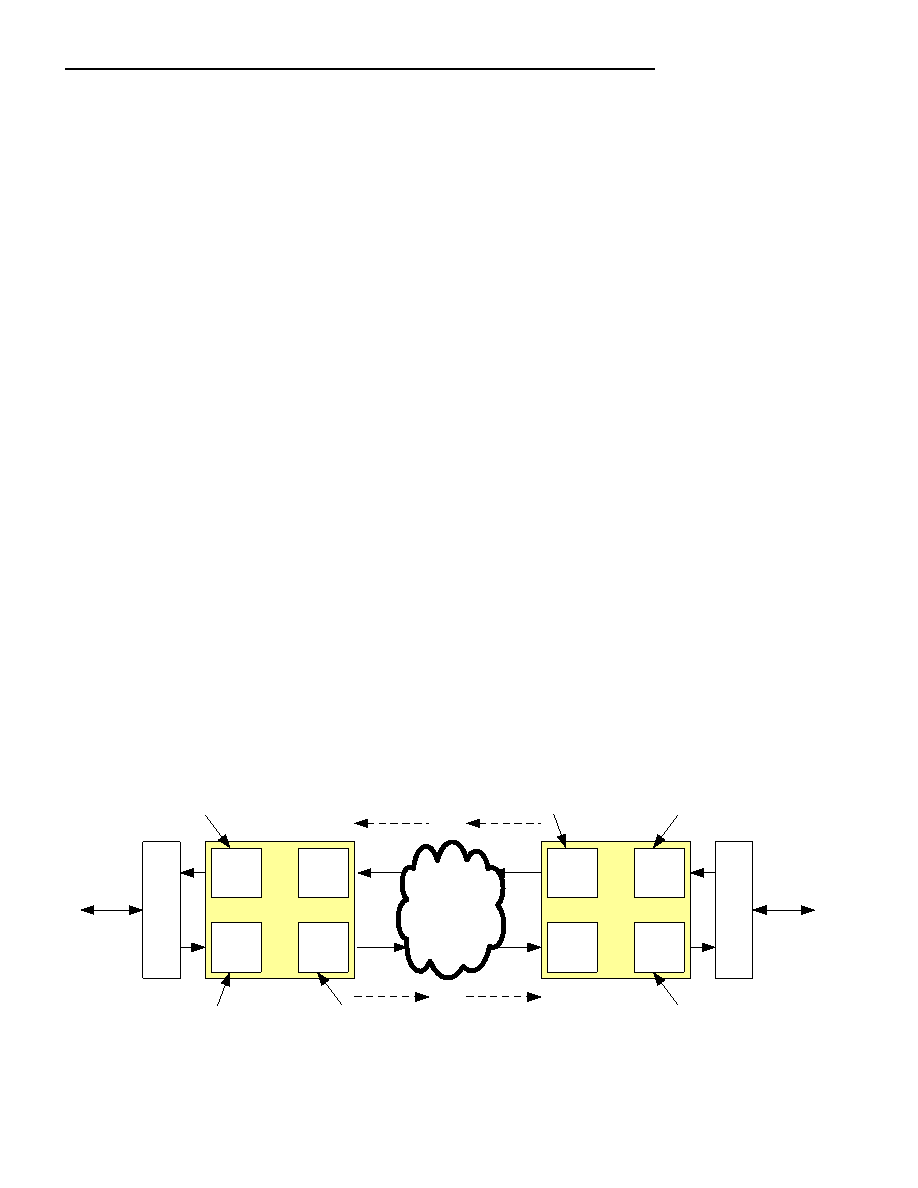- 您現(xiàn)在的位置:買(mǎi)賣(mài)IC網(wǎng) > PDF目錄1916 > DS34S132GN+ (Maxim Integrated Products)IC TDM OVER PACKET 676-BGA PDF資料下載
參數(shù)資料
| 型號(hào): | DS34S132GN+ |
| 廠(chǎng)商: | Maxim Integrated Products |
| 文件頁(yè)數(shù): | 126/194頁(yè) |
| 文件大?。?/td> | 0K |
| 描述: | IC TDM OVER PACKET 676-BGA |
| 產(chǎn)品培訓(xùn)模塊: | Lead (SnPb) Finish for COTS Obsolescence Mitigation Program |
| 標(biāo)準(zhǔn)包裝: | 40 |
| 功能: | TDM-over-Packet(TDMoP) |
| 接口: | TDMoP |
| 電路數(shù): | 1 |
| 電源電壓: | 1.8V, 3.3V |
| 工作溫度: | -40°C ~ 85°C |
| 安裝類(lèi)型: | 表面貼裝 |
| 封裝/外殼: | 676-BGA |
| 供應(yīng)商設(shè)備封裝: | 676-PBGA(27x27) |
| 包裝: | 管件 |
| 其它名稱(chēng): | 90-34S13+2N0 |
第1頁(yè)第2頁(yè)第3頁(yè)第4頁(yè)第5頁(yè)第6頁(yè)第7頁(yè)第8頁(yè)第9頁(yè)第10頁(yè)第11頁(yè)第12頁(yè)第13頁(yè)第14頁(yè)第15頁(yè)第16頁(yè)第17頁(yè)第18頁(yè)第19頁(yè)第20頁(yè)第21頁(yè)第22頁(yè)第23頁(yè)第24頁(yè)第25頁(yè)第26頁(yè)第27頁(yè)第28頁(yè)第29頁(yè)第30頁(yè)第31頁(yè)第32頁(yè)第33頁(yè)第34頁(yè)第35頁(yè)第36頁(yè)第37頁(yè)第38頁(yè)第39頁(yè)第40頁(yè)第41頁(yè)第42頁(yè)第43頁(yè)第44頁(yè)第45頁(yè)第46頁(yè)第47頁(yè)第48頁(yè)第49頁(yè)第50頁(yè)第51頁(yè)第52頁(yè)第53頁(yè)第54頁(yè)第55頁(yè)第56頁(yè)第57頁(yè)第58頁(yè)第59頁(yè)第60頁(yè)第61頁(yè)第62頁(yè)第63頁(yè)第64頁(yè)第65頁(yè)第66頁(yè)第67頁(yè)第68頁(yè)第69頁(yè)第70頁(yè)第71頁(yè)第72頁(yè)第73頁(yè)第74頁(yè)第75頁(yè)第76頁(yè)第77頁(yè)第78頁(yè)第79頁(yè)第80頁(yè)第81頁(yè)第82頁(yè)第83頁(yè)第84頁(yè)第85頁(yè)第86頁(yè)第87頁(yè)第88頁(yè)第89頁(yè)第90頁(yè)第91頁(yè)第92頁(yè)第93頁(yè)第94頁(yè)第95頁(yè)第96頁(yè)第97頁(yè)第98頁(yè)第99頁(yè)第100頁(yè)第101頁(yè)第102頁(yè)第103頁(yè)第104頁(yè)第105頁(yè)第106頁(yè)第107頁(yè)第108頁(yè)第109頁(yè)第110頁(yè)第111頁(yè)第112頁(yè)第113頁(yè)第114頁(yè)第115頁(yè)第116頁(yè)第117頁(yè)第118頁(yè)第119頁(yè)第120頁(yè)第121頁(yè)第122頁(yè)第123頁(yè)第124頁(yè)第125頁(yè)當(dāng)前第126頁(yè)第127頁(yè)第128頁(yè)第129頁(yè)第130頁(yè)第131頁(yè)第132頁(yè)第133頁(yè)第134頁(yè)第135頁(yè)第136頁(yè)第137頁(yè)第138頁(yè)第139頁(yè)第140頁(yè)第141頁(yè)第142頁(yè)第143頁(yè)第144頁(yè)第145頁(yè)第146頁(yè)第147頁(yè)第148頁(yè)第149頁(yè)第150頁(yè)第151頁(yè)第152頁(yè)第153頁(yè)第154頁(yè)第155頁(yè)第156頁(yè)第157頁(yè)第158頁(yè)第159頁(yè)第160頁(yè)第161頁(yè)第162頁(yè)第163頁(yè)第164頁(yè)第165頁(yè)第166頁(yè)第167頁(yè)第168頁(yè)第169頁(yè)第170頁(yè)第171頁(yè)第172頁(yè)第173頁(yè)第174頁(yè)第175頁(yè)第176頁(yè)第177頁(yè)第178頁(yè)第179頁(yè)第180頁(yè)第181頁(yè)第182頁(yè)第183頁(yè)第184頁(yè)第185頁(yè)第186頁(yè)第187頁(yè)第188頁(yè)第189頁(yè)第190頁(yè)第191頁(yè)第192頁(yè)第193頁(yè)第194頁(yè)

DS34S132 DATA SHEET
19-4750; Rev 1; 07/11
37 of 194
9.2.2.2 TDM Port Receive Interface
The T1/E1 Receive interface is controlled using the Pn.PRCR1 and Pn.PRCR2 registers to program the following
functions (more of the PRCR1 functions are described in the sub-sections that follow):
RSTS:
Select the receive framing to be synchronized to RSYNCn or internal transmit framing
RDS:
Select RSYNCn direction to be input or output
RIES:
Select RDATn, RSIGn and RSYNCn timed to the positive or negative RCLKn edge
RSS:
Select clock source to be RCLKn or TCLKOn
CS:
Select RDAT or RSIG for TXP direction CAS Signaling interface
9.2.3 TDM Port Structure & Frame Formats
The TDM Ports support the Structured (with Framing) and Unstructured (without Framing) Formats. The Structured
Format is used by T1/E1 CES applications. The Unstructured Format is used by T1/E1 SAT and non-T1/E1 SAT
applications. The SAT/CES Format for each TDM Port is programmed using Pn.PTCR1.SFS and Pn.PRCR1.SFS.
The programmed SAT/CES Format for all RXP and TXP Bundles (B.BCDR4.RXBTS and B.BCDR3.TXBTS) must
be the same as the programmed SAT/CES Format for the TDM Port that they are assigned to.
The Structured Format (CES) is programmed to T1 or E1 Framing using Pn.PRCR1.FFS and Pn.PTCR1.FFS. The
Multi-frame formats that are supported in the Structured Format (CES) are: no multi-frame, T1 SF, T1 ESF and E1
(selected using Pn.PRCR1.MFS and Pn.PTCR1.MFS). For CES with MFS = “no multi-frame” the RSYNC/TSYNC
pulse period is ~125 us (“193 bits/frame” for T1 or “256 bits/frame” period for E1) and CAS is not supported. For the
remaining CES settings the RSYNC/TSYNC periods are based on a “12 x 193 bit”, “24 x 193 bit” or “16 x 256 bit”
period (for SF, ESF or E1 respectively) and CAS Signaling is included.
SFS and MFS should be set to be the same as that of the “l(fā)ocal” external transceiver (e.g. T1/E1 Framer). The
MFS setting is a multi-frame setting to enable the CAS functions of the S132. The MFS setting may differ from the
external transceiver where the multi-frame format setting determines both the T1/E1 framing pattern and the CAS
Signaling format. For multi-frame, non-CAS applications the S132 MFS should be set for MFS = “no multi-frame”
(meaning no CAS multi-frame) and the external transceiver should be set to T1-SF, T1-ESF or E1. This will disable
the S132 CAS Signaling functions and the frame synchronization will only be used to frame align the Timeslots.
In most applications the T1/E1 format at both ends of a PW are the same (e.g. T1 SF to T1 SF). Some unusual T1
CAS applications may prefer to translate one T1 CAS format to the other (e.g. translate T1 SF CAS to T1 ESF
CAS). This function is a unidirectional S132 function that is implemented in the TXP direction using the TXP Bundle
Payload Multi-frame Format setting (B.BCDR1.SCTXDFSE; the RXP direction does not support translation). The
SCTXDFSE setting should always match the T1 CAS Format of the far end T1 PW termination end point (this
setting is not used for E1 and T1 non-CAS applications). For T1 CAS applications the SCTXDFSE setting can differ
from the MFS settings to provide a T1 CAS Multi-frame Format translation (or be the same for no translation). An
example T1 ESF CAS to SF CAS Translation is depicted in Figure 9-12. More CAS translation information is
provided in the “TDM CAS to Packet CAS Translation” section.
Figure 9-12. T1 ESF CAS to SF CAS Translation Example
S132
T1
/E
1
Framer
RXP
Bundle
TXP
Bundle
TDM
Xmt
Port
TDM
Rcv
Port
S132
T1
/E
1
Framer
RXP
Bundle
TXP
Bundle
TDM
Xmt
Port
TDM
Rcv
Port
T1
ESF
T1
SF
SCTXDFSE = SF
PRCR1.FFS & MFS = ESF
PTCR1.FFS & MFS = ESF
SCTXDFSE = SF
PRCR1.FFS & MFS = ESF
PTCR1.FFS & MFS = ESF
TXP
Direction
TXP
Direction
RXP
Direction
RXP
Direction
PSN
Internally, the data for SAT/CES Bundles is processed using data that is stored in short term, Staging Buffers. The
buffers are filled and then forwarded. Each Staging Buffer is divided into fragments (blocks) of data. One Fragment
stores the SAT/CES data for a 125 us period (TDAT or RDAT data). Pn.PRCR1.BPF and Pn.PTCR1.BPF specify
相關(guān)PDF資料 |
PDF描述 |
|---|---|
| DS34T102GN+ | IC TDM OVER PACKET 484TEBGA |
| DS3501U+H | IC POT NV 128POS HV 10-USOP |
| DS3502U+ | IC POT DGTL NV 128TAP 10-MSOP |
| DS3503U+ | IC POT DGTL NV 128TAP 10-MSOP |
| DS3897MX | IC TXRX BTL TRAPEZIODAL 20-SOIC |
相關(guān)代理商/技術(shù)參數(shù) |
參數(shù)描述 |
|---|---|
| DS34S132GN+ | 功能描述:通信集成電路 - 若干 32Port TDM-Over-Pack Transport Device RoHS:否 制造商:Maxim Integrated 類(lèi)型:Transport Devices 封裝 / 箱體:TECSBGA-256 數(shù)據(jù)速率:100 Mbps 電源電壓-最大:1.89 V, 3.465 V 電源電壓-最小:1.71 V, 3.135 V 電源電流:50 mA, 225 mA 最大工作溫度:+ 85 C 最小工作溫度:- 40 C 封裝:Tube |
| DS34S132GNA2+ | 功能描述:通信集成電路 - 若干 32Port TDM-Over-Pack Transport Device RoHS:否 制造商:Maxim Integrated 類(lèi)型:Transport Devices 封裝 / 箱體:TECSBGA-256 數(shù)據(jù)速率:100 Mbps 電源電壓-最大:1.89 V, 3.465 V 電源電壓-最小:1.71 V, 3.135 V 電源電流:50 mA, 225 mA 最大工作溫度:+ 85 C 最小工作溫度:- 40 C 封裝:Tube |
| DS34T101 | 制造商:MAXIM 制造商全稱(chēng):Maxim Integrated Products 功能描述:Single/Dual/Quad/Octal TDM-over-Packet Chip |
| DS34T101_08 | 制造商:MAXIM 制造商全稱(chēng):Maxim Integrated Products 功能描述:Single/Dual/Quad/Octal TDM-over-Packet Chip |
| DS34T101_09 | 制造商:MAXIM 制造商全稱(chēng):Maxim Integrated Products 功能描述:Single/Dual/Quad/Octal TDM-over-Packet Chip |
發(fā)布緊急采購(gòu),3分鐘左右您將得到回復(fù)。